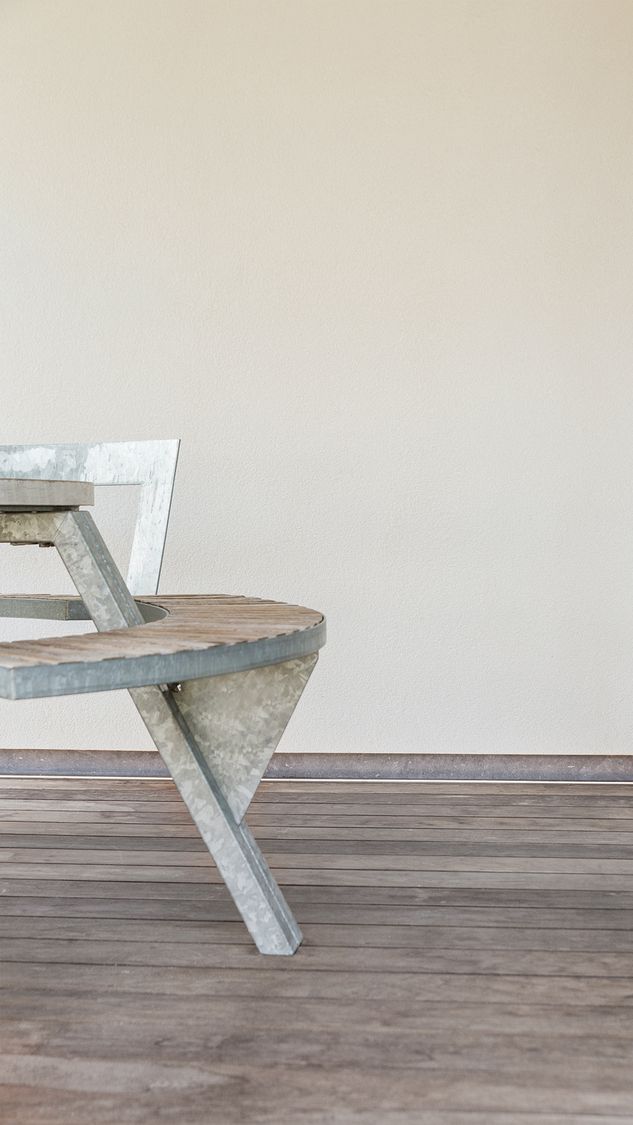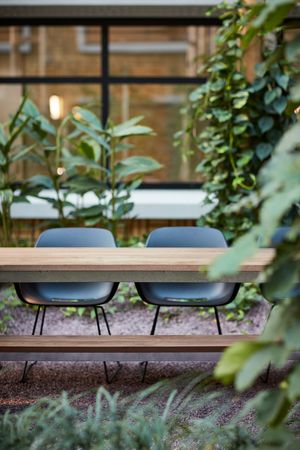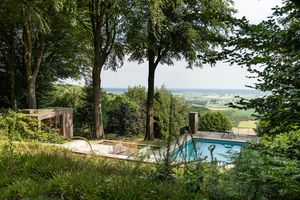In the early 1990s, the design market wasn't ready yet for outdoor furniture. Outdoors was a separate category. In most gardens, ornate teak or white plastic chairs prevailed. When Dirk Wynants approached design stores, they showed little enthusiasm for something that was not for the interior. In garden centres, he was even less welcome. These places found design ‘far too modern’. The lack of appreciation for well-designed outdoor furniture was a challenge, but this turned out to be an opportunity. Extremis was able to play a pioneering role. Within a few years, we managed to establish our name as an international trendsetter.
Where it all started
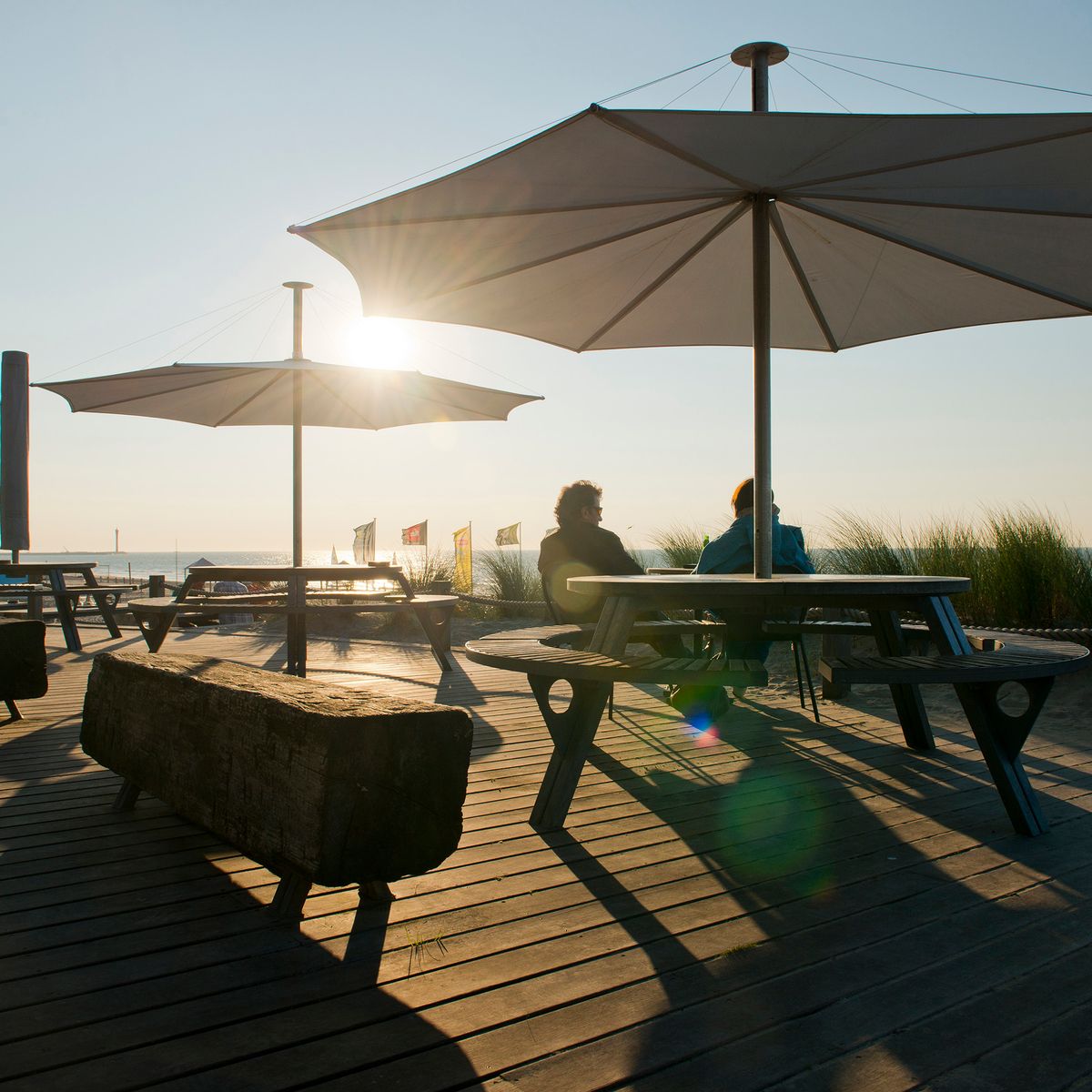
The birth of Gargantua, the very first Extremis table
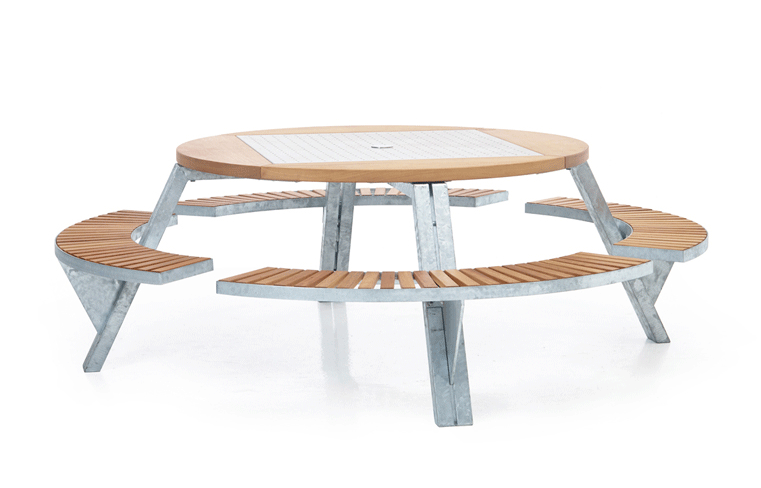
The Gargantua Table
The relative simplicity and economy of Gargantua's design are a direct result of technical, physical and budget limitations that Dirk Wynants had to consider when starting up his business in 1994. He could only afford to have one model, one colour, one type and one size. It is said that scarcity leads to creativity, and the most difficult circumstances to the best solutions. In the case of Gargantua, this is undoubtedly true.
Designer's choice of material
The designer focused wholly on multifunctionality and flexibility. For outdoor furniture, the choice of materials is clearly not based on aesthetic considerations alone. Indeed, the materials used in Gargantua are also geared to a whole range of rational aspects of use, comfort, maintenance, economy and durability.
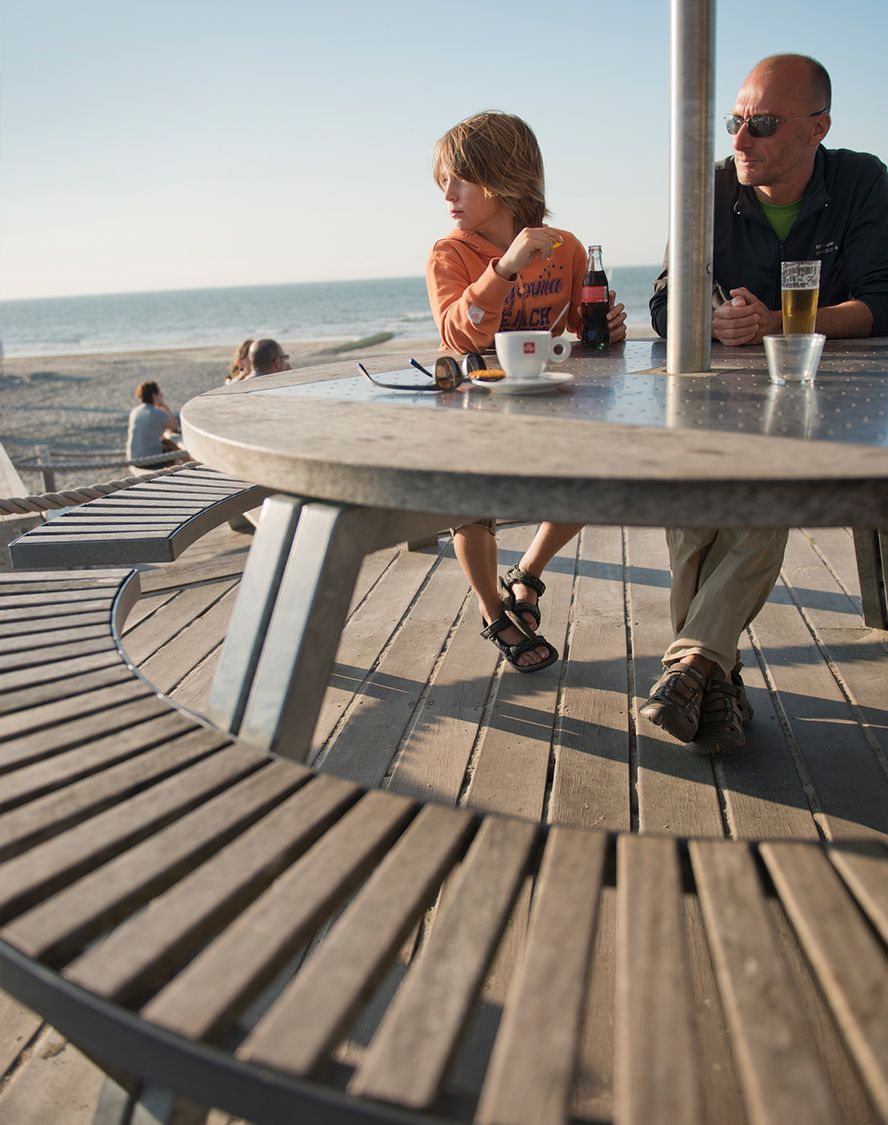
For example, the central piece of the round table consists of a square sheet of perforated stainless steel. This allows for drainage and for dirt to be rinsed away. Large pieces of wood have been used on the table’s edges. Here, touch plays an important role. Wood is warmer to the touch than metal and therefore a more agreeable material for those areas with which your body comes into contact.

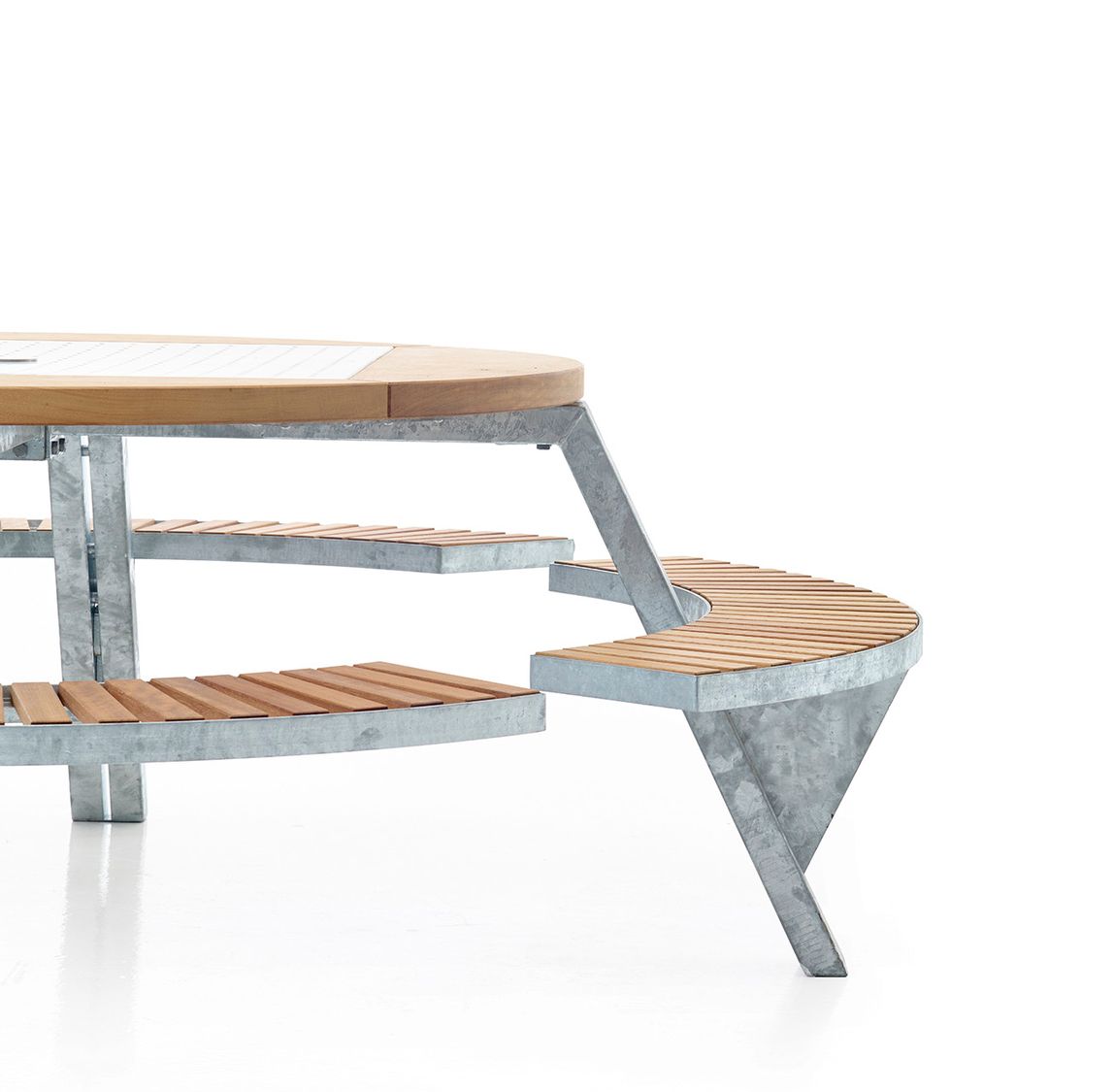
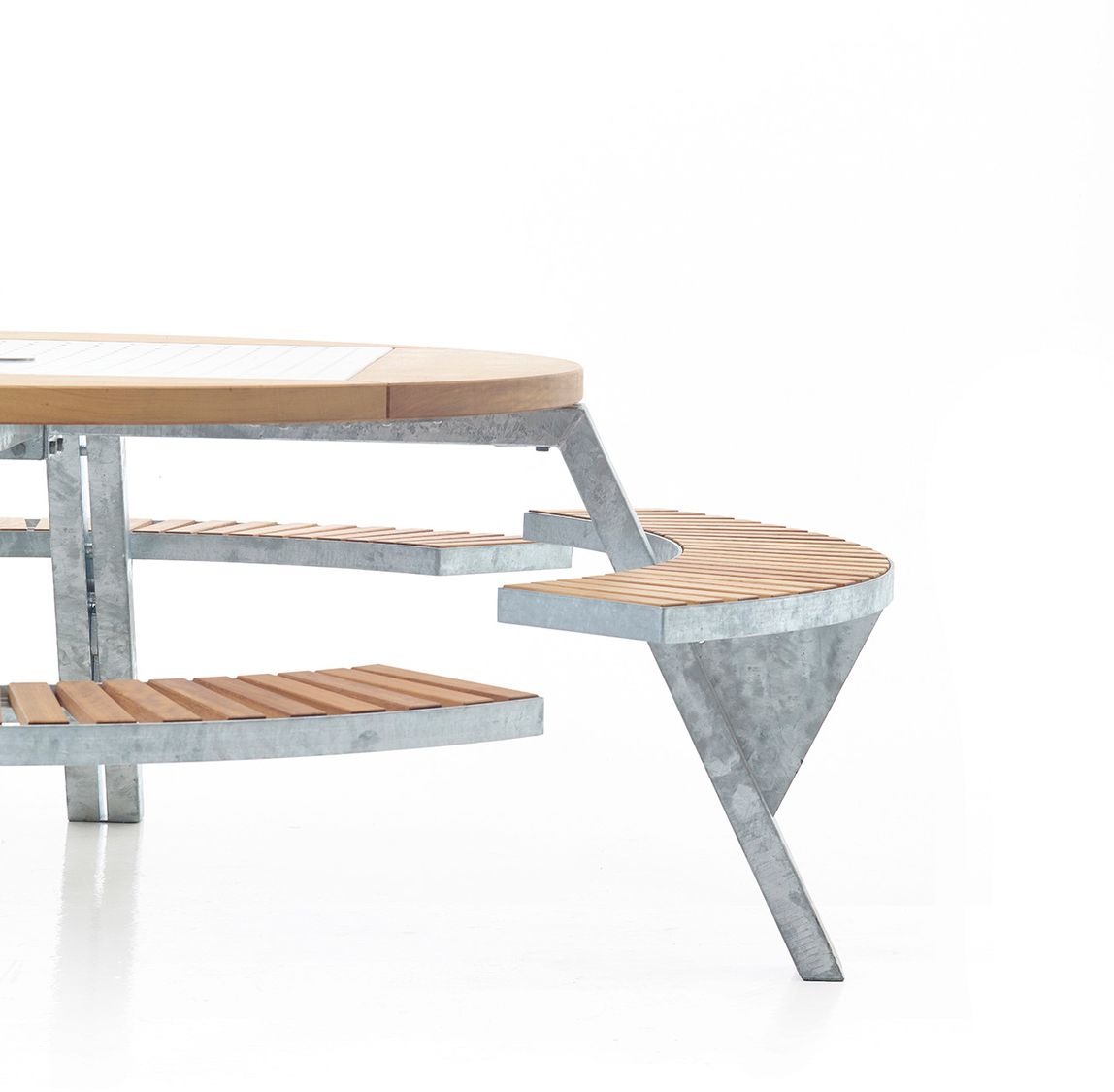
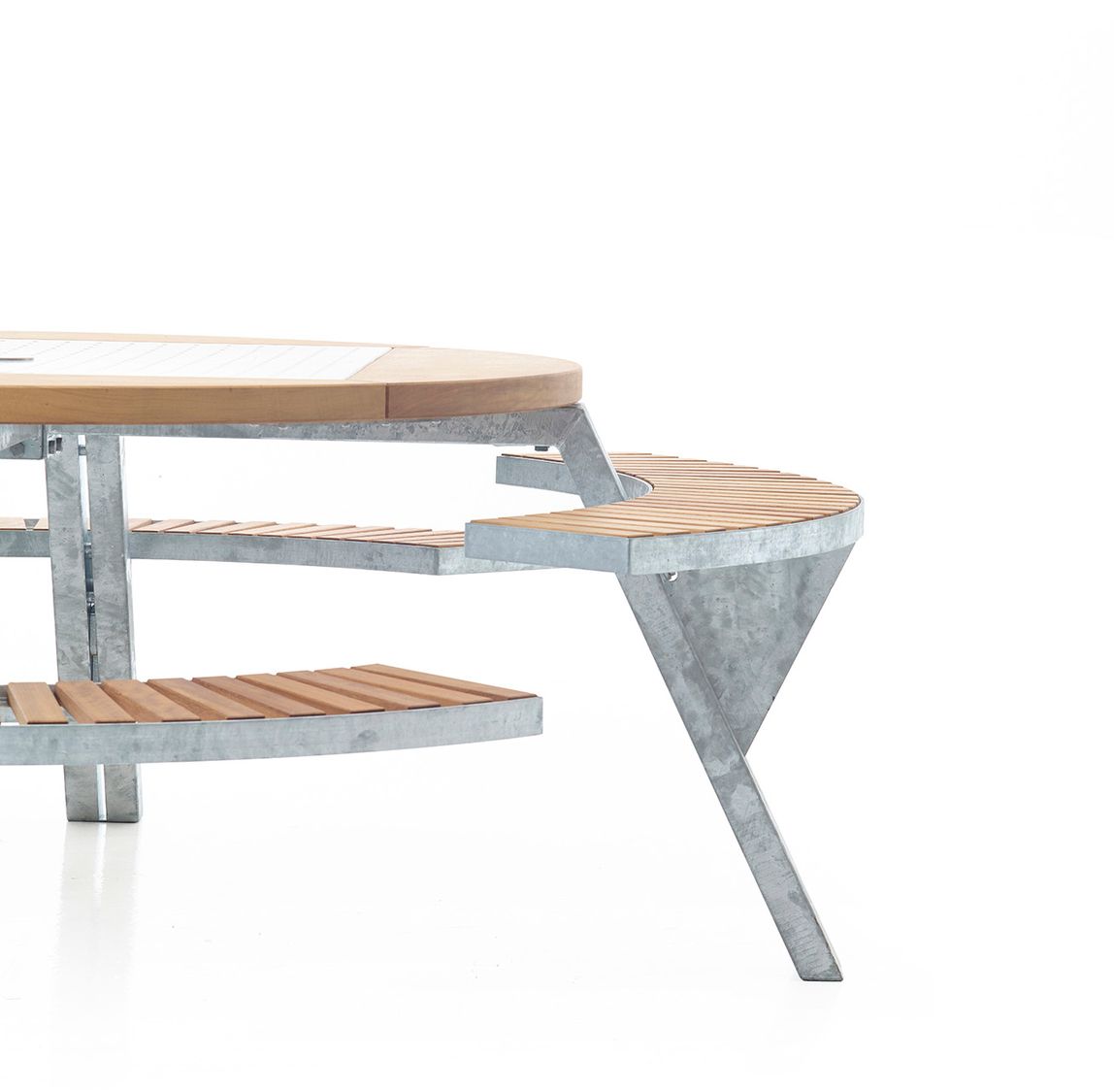
Minimal wood waste
Much thought was also given to the value of the materials. To minimize waste, the dimensions of the table adhered to standard board sizes. In production, surplus wood was also limited by using small pieces of wood for the benches. The legs and base are made of galvanised steel. Sturdiness and durability take priority over aesthetics. Another practical, economical and environmentally-friendly feature of the Gargantua table is that it is easy to dismantle and transport in a smaller volume. This would prove to be a constant across the Extremis collection.
